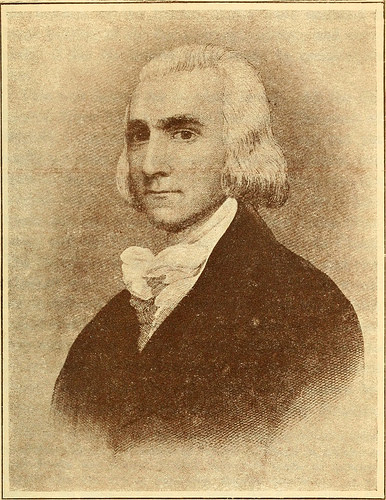Verify out these chinatrade photos:
Image from web page 234 of “History of Oregon the development of an American state” (1903)

Image by Internet Archive Book Pictures
Identifier: historyoforegong02lyma
Title: History of Oregon the growth of an American state
Year: 1903 (1900s)
Authors: Lyman, Horace Sumner, 1855-1904 Scott, Harvey W. (Harvey Whitefield), 1838-1910 Bellinger, Charles Byron, 1839-1905 Young, Frederick George, b. 1858
Subjects: Oregon — History
Publisher: New York : North Pacific Pub. Soc.
View Book Web page: Book Viewer
About This Book: Catalog Entry
View All Images: All Photos From Book
Click here to view book on the internet to see this illustration in context in a browseable on-line version of this book.
Text Appearing Just before Image:
predicted that he would himselfone day, although at that time but an unknown Ger-man trader, construct finer structures than have been thenrising to astonish the inhabitants of Gotham. Pur-suing his organization of getting furs, which he got most-ly in Canada and was obliged to send from Montrealto London, he swiftly found the state and con-dition of the excellent and still profitable and growingtrade in peltries. He decided that not Canada butthe United States was the all-natural center of this trade,and that it may well be diverted to New York. For tworeasons this appeared the very first was largely a con-vention, and may well be changed by law, as was actual-ly carried out which was that Canada was not allowed totrade to any country but Wonderful Britain. This handi-capped Canada as the center of a planet-wide trade.From America trade to all parts of the planet couldbe undertaken. It was a great policy, then, to con-centrate the entire fur trade, as far as feasible, withinthe United States. The other explanation was from pure-
Text Appearing After Image:
JOHN JACOB ASTOR AN AMERICAN STATE 233 ly natural, or geographical considerations. Withinthe borders of the United States have been included alarge portion of the fur bearing regions and espe-cially if the Northwest coast could be integrated inthis. This was certainly the deciding aspect. All the Co-lumbia River Valley was fur-bearing. The coast ofBritish Columbia, or New Caledonia, was not yetunder the handle of any nation, and like Oregon, wasopen to the enterprise of Americans. Right here also theBritish had been severely handicapped, as the Chinatrade was nevertheless a monopoly of the East India Com-pany, and the Canadians could not trade to China.The Russians, it is true, occupied the extended and richAlaskan coast, as now denominated but it wouldnot be challenging to cultivate relations with them whichwould allow Americans to trade there also. Indeedthey have been performing so currently, but clandestinely and tothe annoyance of the Russians. In place of this illicittrade,* which was the only bone of contention be-twe
Note About Photos
Please note that these pictures are extracted from scanned page pictures that might have been digitally enhanced for readability – coloration and appearance of these illustrations might not completely resemble the original work.
Image from web page 13 of “Some ships of the clipper ship era, their builders, owners, and captains” (1913)

Image by Web Archive Book Pictures
Identifier: someshipsofclipp00stat
Title: Some ships of the clipper ship era, their builders, owners, and captains
Year: 1913 (1910s)
Authors: State Street Trust Business (Boston, Mass.) Walton Marketing and Printing Firm
Subjects: Clipper ships
Publisher: Boston, Mass. : Printed for the State Street Trust Business
View Book Web page: Book Viewer
About This Book: Catalog Entry
View All Photos: All Pictures From Book
Click here to view book on-line to see this illustration in context in a browseable on the internet version of this book.
Text Appearing Prior to Image:
ong, constructed in 1832at Baltimore, represented the 1st work to reproduce the largeclipper-like lines of the modest vessels in the lines of bigger ones.She was beautifully fitted, and, as she was engaged in the Chinatrade, carried guns for protection against pirates. Eventually,she fell into the hands of Howland & Aspinwall, ship-owners ofNew York, and led them in 1843 to embody in the Rainbow,the initial actual clipper ship ever constructed, the design and style of a clipper whichJohn W. Griffiths had suggested in a model he had shown at the eight SOME SHIPS OF THE CLIPPER SHIP ERA American Institute in 1841. The Rainbow, which was of750 tons, was constructed by Smith & Dimon, and under the cap-taincy of John Land proved extremely fast. So enthusiastic was Landthat he dechired she was the quickest boat in the world, and boast-ingly said that no boat could be built to beat her. Her successset the builders of New York, Boston, and Portsmouth to turningout clipper ships, and the discovery of gold in California and.
Text Appearing After Image:
CANTON PACKET later, in Australia significantly accelerated clipper ship construc-tion. The greatest quantity were built in between 1850 and 1855.The out})reak of the Civil War, with its privateers and the compe-tition of steam, drove the clij)per ships from the sea, and withtheir disappearance began the decadence of the American mer-chant marine. Such in outline is the story of the clip])er shipera. Let us glance a lot more closely at some of the famous shipswhich had been either built in Boston or have been owned or sailed byBoston guys. The Canton Packet was the kind of quick-sailing SOME SHIPS OF THE CLIPPER SHIP ERA 9 merchant ship which preceded the accurate clipper ship, and was abark built for J. & T. H. Perkins and other folks. Robert Bennett Forbes, who was employed as office-boy inthe firm of J. & T. H. Perkins, spent his spare time visitingtheir ships while they have been unloading at Central Wharf, whichwas close to the office on Fosters Wliarf, and at times his uncle,T. H. Perkins, would remark, when Bob wa
Note About Pictures
Please note that these pictures are extracted from scanned web page photos that may possibly have been digitally enhanced for readability – coloration and appearance of these illustrations may possibly not completely resemble the original work.